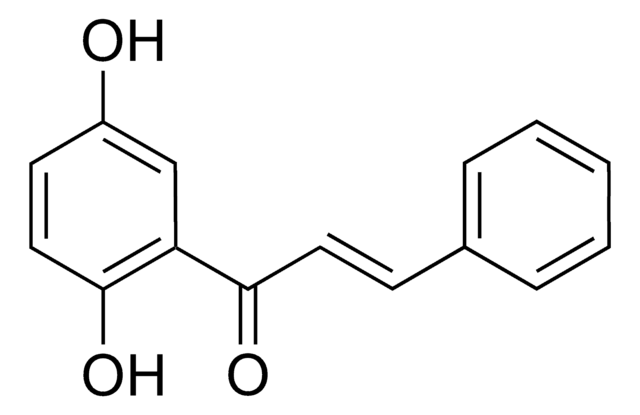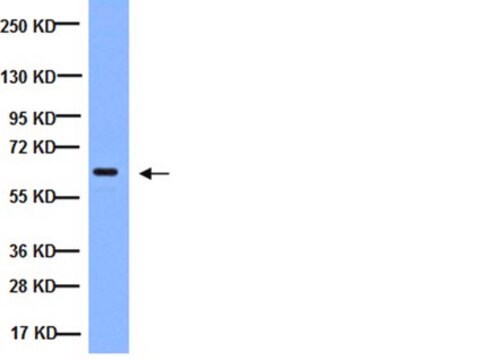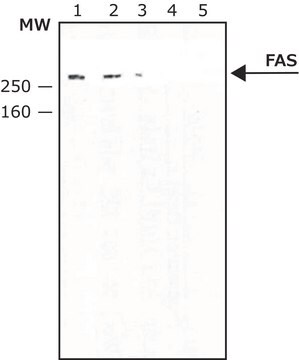MABE1799
Anti-Nrf2 Antibody, clone 103
clone 103, from rat
Sinonimo/i:
Nuclear factor erythroid 2-related factor 2, NF-E2-related factor 2, NFE2-related factor 2, Nuclear factor, erythroid derived 2, like 2
About This Item
Prodotti consigliati
Origine biologica
rat
Livello qualitativo
Forma dell’anticorpo
purified immunoglobulin
Tipo di anticorpo
primary antibodies
Clone
103, monoclonal
Reattività contro le specie
rat, mouse
tecniche
immunohistochemistry: suitable
western blot: suitable
Isotipo
IgG2bκ
N° accesso NCBI
N° accesso UniProt
Condizioni di spedizione
ambient
modifica post-traduzionali bersaglio
unmodified
Informazioni sul gene
mouse ... Nfe2L2(18024)
Descrizione generale
Specificità
Immunogeno
Applicazioni
Western Blotting Analysis: A representative lot detected Nrf2 in Western Blotting applications (Maruyama, A., et. al. (2008). Arch Biochem Biophys. 477(1):139-45; Kobayashi, E.H., et. al. (2016). Nat Commun. 7:11624; Taquchi, K., et. al. (2016). Toxicol Sci. 152(1):40-52; Saito, R., et. al. (2015). Mol Cell Biol. 36(2):271-84; Taquchi, K., et. al. (2014). Mol Cell Biol. 34(5):900-13).
Epigenetics & Nuclear Function
Qualità
Western Blotting Analysis: 0.5 µg/mL of this antibody detected Nrf2 in Keap1-KO MEF cell lysates versus Nrf2-KO MEF cell lysates.
Descrizione del bersaglio
Stato fisico
Stoccaggio e stabilità
Altre note
Esclusione di responsabilità
Non trovi il prodotto giusto?
Prova il nostro Motore di ricerca dei prodotti.
Codice della classe di stoccaggio
12 - Non Combustible Liquids
Classe di pericolosità dell'acqua (WGK)
WGK 1
Certificati d'analisi (COA)
Cerca il Certificati d'analisi (COA) digitando il numero di lotto/batch corrispondente. I numeri di lotto o di batch sono stampati sull'etichetta dei prodotti dopo la parola ‘Lotto’ o ‘Batch’.
Possiedi già questo prodotto?
I documenti relativi ai prodotti acquistati recentemente sono disponibili nell’Archivio dei documenti.
Il team dei nostri ricercatori vanta grande esperienza in tutte le aree della ricerca quali Life Science, scienza dei materiali, sintesi chimica, cromatografia, discipline analitiche, ecc..
Contatta l'Assistenza Tecnica.








